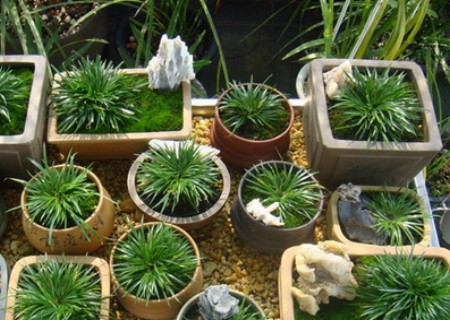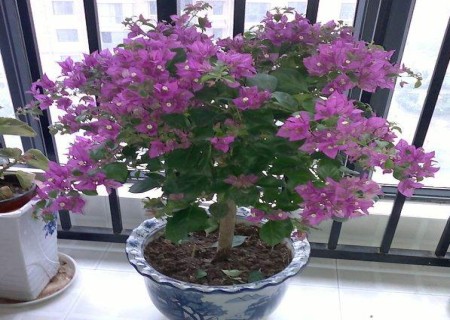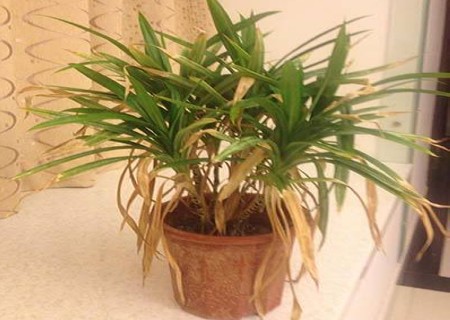How to raise calamus in winter
Acorus calamus has been regarded as a kind of spiritual grass since ancient times, which has the effect of preventing epidemic disease and expelling evil spirits. But at the same time, it is also a traditional flower plant, suitable for potted plants, made into bonsai to watch, very likeable, in recent years in the flower market continues to be popular. And with daffodils, chrysanthemums and orchids once won the reputation of "four elegant flowers and plants".

Now it has entered the deep winter, although the wild calamus has a strong cold tolerance, but as a pot cultivation of calamus, its cold tolerance is very poor. Especially with the recent sharp drop in temperature, many people begin to worry about whether the potted calamus in the home will suffer frost damage. If we want the calamus to be protected from freezing damage in such a cold winter, we must master the necessary maintenance knowledge. So, how to raise calamus in winter?
From the characteristics of the growth habits of Acorus calamus, we know that Acorus calamus likes the cool and humid growth environment, has a certain cold tolerance, and the drought tolerance is poor under normal circumstances. Therefore, the cultivation of calamus must provide water protection, but at the same time to avoid stagnant water in the basin, so that the basin soil can be kept just wet. If you want to raise calamus well, you must provide it with a comfortable growing environment.
First, prevent frost and keep warm
If the owner has been putting the calamus potted plant in the outdoor maintenance and management, the calamus naturally adapted to the external growth environment. Although it is in winter, but because calamus has a certain degree of cold tolerance, even in the 0 °C environment, the cold wind with snowflakes will not be frostbite. However, in the case of frequent ultra-low temperatures like this year, especially in the north, the temperature can even reach minus 30 or 40 degrees. If we can not provide them with measures to keep warm, it will not only affect their growth, but also frostbite, or even frostbite plants. Therefore, in this case, we need to move it to indoor maintenance in time.
In winter, calamus will grow slowly with the lower temperature, the old leaves near the lower position will gradually become withered and yellow, and even the new leaves will stagnate. In winter, the most important thing for the maintenance of calamus is to take good measures to keep warm. Therefore, in the face of ultra-low temperature weather, we should not hesitate to move it indoors and put it in the right position, and at the same time provide warm measures for it according to the situation, such as turning on ground heating and blowing air-conditioning. However, if it is a hot air conditioner, you should avoid putting calamus in the air outlet.
Second, watering and replenishing water
The next thing we need to pay attention to is to water the calamus. As the indoor air of the open ground heating or hot air conditioning is relatively dry, after moving the calamus bonsai into the room, a large part of the moisture in the basin soil will evaporate. If it is replenished with water in time, it is easy to cause water shortage and affect the growth of plants, so timely watering is particularly important. When it is found that the basin soil becomes dry, it should be replenished in time to keep the basin soil moist all the time, and the temperature of the water should be about the same as the indoor air temperature. And the frequency of watering should be more than less, it is better to drown it than to let it dry. Because the calamus plant itself is not resistant to drought and is afraid of drying. However, watering is still required to be moderate to avoid stagnant water in the basin.
Third, pruning dead leaves
After entering winter, due to low temperature and other reasons, the old leaves of Acorus calamus are easily withered and yellow. In order to prevent the withered and yellow stems and leaves from falling in the basin and causing rot, or infecting other healthy leaves that are growing well, we need to cut off all these yellow stems and leaves in time. If the whole leaf turns yellow, we should cut it off at the base; if it is only part of the leaf, such as the tip of the leaf, we only need to cut off the yellow part. Must not blindly cut off a large number of green leaves and yellow leaves, otherwise the rhizome of calamus may be hurt, thus affecting the growth of the whole plant.
4. Proper lighting
Although Acorus calamus has a strong ability to tolerate shade and prefer a damp growth environment, everything in the world needs to receive light to promote photosynthesis and complete metabolism, so as to maintain healthy growth. Therefore, even in the cold winter, if it is sunny, we also need to provide light at the appropriate time. Usually, if the outdoor temperature is still ultra-low, we need to move calamus close to the window to receive scattered light; if it is relatively warm outdoors, we can move it to the shade of outdoor trees at noon. let it receive some light to promote photosynthesis.
Time: 2019-05-30 Click:
- Prev

Culture method of triangular plum in winter
In recent years, with the increasing fame of triangular plum, more and more friends have joined the team of raising triangular plum. Indeed, triangular plum is very popular with people, whether in the garden or in the courtyard, even in the balcony, their beautiful figure can often be seen. Or pink, or red.
- Next

What if the leaves of the potted dragon blood tree turn yellow?
Dragon blood tree is a beautiful foliage plant, which not only likes yang, but also can endure shade, so it is suitable for indoor potted plants. However, if it is kept in a shady environment for a long time, its leaves will gradually fade and seriously affect the ornamental effect. Therefore, even if it is placed in indoor maintenance, it needs to be placed in a brightly lit place.
Related
- Fuxing push coffee new agricultural production and marketing class: lack of small-scale processing plants
- Jujube rice field leisure farm deep ploughing Yilan for five years to create a space for organic food and play
- Nongyu Farm-A trial of organic papaya for brave women with advanced technology
- Four points for attention in the prevention and control of diseases and insect pests of edible fungi
- How to add nutrient solution to Edible Fungi
- Is there any good way to control edible fungus mites?
- Open Inoculation Technology of Edible Fungi
- Is there any clever way to use fertilizer for edible fungus in winter?
- What agents are used to kill the pathogens of edible fungi in the mushroom shed?
- Rapid drying of Edible Fungi

